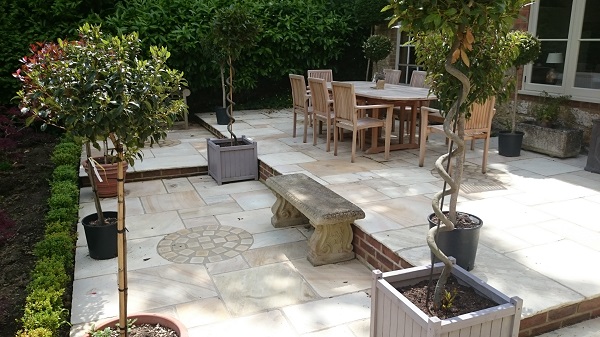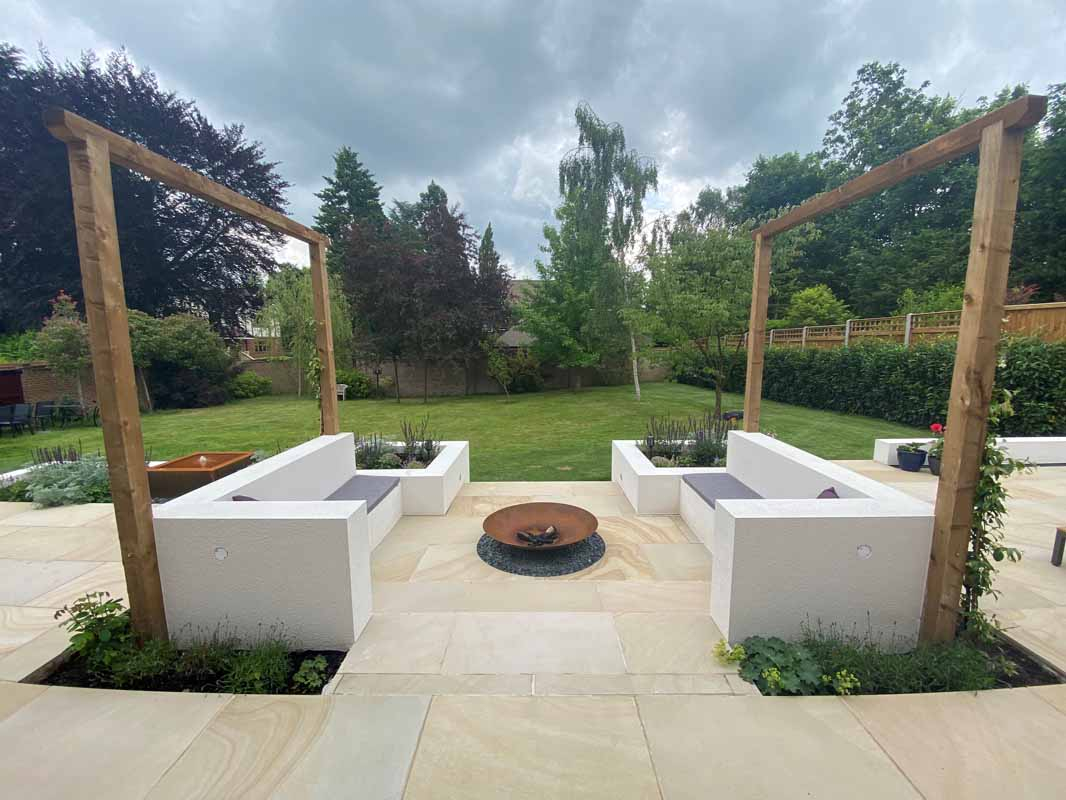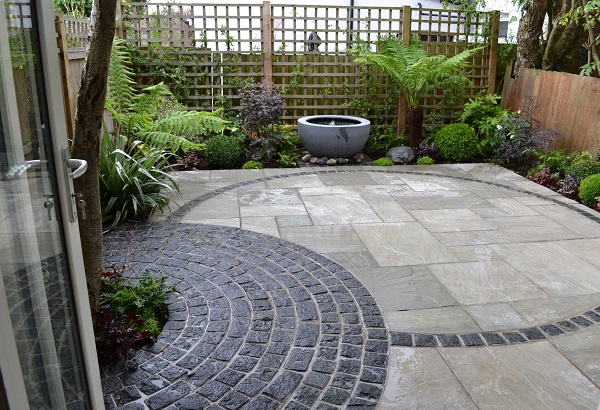Wondering what paving to choose for your patio? We guide you through the many Indian sandstone colours available.
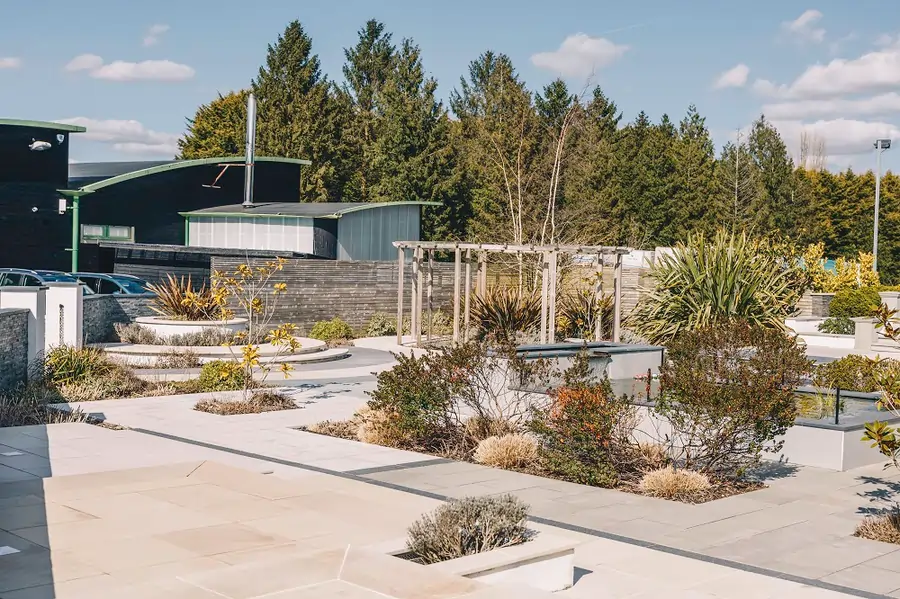
Why are there so many sandstone paving colours?
Sandstone is one of the most common types of sedimentary rock, formed of sands and sediments that are compressed together or bond chemically over time to form rock. The sand particles, made up of minerals such as quartz, feldspars and lithic, are formed by the weathering and erosion of a variety of source rocks, and are what give different sandstones their unique colour and characteristics.
The sedimentary process occurs under water - oceans, seas and lakes - and the presence of different amounts of oxygen in the laying down of the grains also affects the colour. The structure of the sandstone determines its porosity and permeability.
A sandstone’s colour indicates its make-up. Red shades contain iron oxide; yellow indicates sulphur. Volcanic sand adds black tones; clay or silt, grey. You'll even find purple tones, caused by manganese.
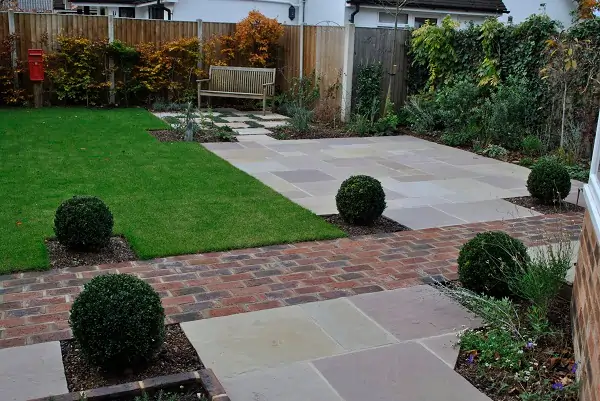
Why sandstone paving is so popular
Colours
The range of sandstone paving colours has a huge part to play its popularity. Browns, buffs, creams, greys—and reds, oranges and purples—mean it’s usually easy to find the colour you want. Perhaps the only exception is if you want a blue-paved patio design, in which case it’s best to look to limestone.
Natural variation
A feature of sandstone is natural variation, and veining and cloudy markings are common. Some sandstones have more colour and pattern variations than others. Kandla Grey, for example, is particularly even-coloured, whereas Camel Dust displays strong patterning. Every sandstone slab is unique, which gives your paving its individual character and displays its natural origins.
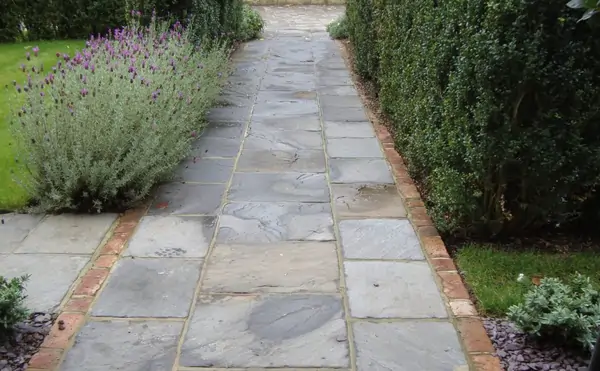
Surface texture
Surface texture varies, depending on the finish, and making a choice between sawn and riven paving will affect the colours available to you. The preference for riven or sawn stone is a matter of taste, aesthetics and practicality. Riven stone is split, creating a gently uneven ripple that softens its appearance. It’s often used in traditional designs. Smooth, sawn stone is cut on all six sides, creating crisp linearity. A sawn stone finish may be applied, to enhance slip resistance and appearance.
Price range
Since it was first imported in volume, Indian sandstone has been available at prices to suit almost every budget. Riven sandstone, in particular, offers great value for money.
Sawn sandstones are available for a wide range of budgets, with those showing the least colour variation often in the highest price bracket. We always recommend that sawn paving should be sealed to make cleaning easier, especially on light colours, so this needs to be factored into the overall cost.
Indian sandstone paving colours
London Stone offers nearly 20 different Indian sandstone paving colours. We highlight just a few as we take you through the general colour options in our sandstone paving range.
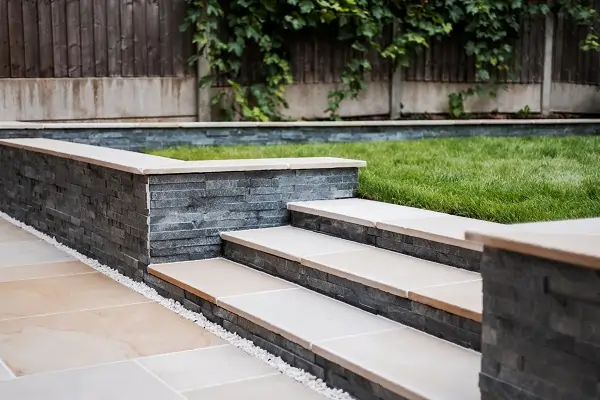
Cream/Beige
Pale, creamy sandstone offers subtle tones that draw light into a space and is particularly favoured for modern spaces. Check out Beige sandstone and Multi Mint.
Like Beige sandstone, Antique Cream has very consistent colouring but with a touch more warmth. The sawn stone is tumbled, to give a relaxed, time-worn feel to the edges, and the surface is then shot-blasted and brushed to carry through the softer look. We stock this especially for clients who like an even, pale colour without the ultra-modern styling that often accompanies it, so Antique Cream comes in project packs (comprising four sizes of patio slabs in equal quantities), allowing for more informal paving patterns.
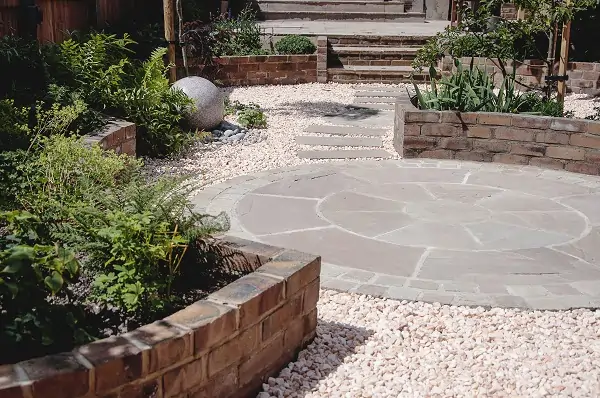
Grey/black
Grey never goes out of fashion and is often chosen as a neutral colour to complement other elements in the garden. Kandla Grey is the most popular of all our Indian sandstone pavings. Even colouring and a naturally flat split give it a more consistent finish than some other sandstones. It's also an excellent foil for green foliage and pastel-coloured flowers, making it a favourite that fits in traditional and modern designs.
Flamed Grey is a sandstone shade that people can’t seem to get enough of. A designer favourite, it's featured in show gardens through the years. It has little colour variation but the flaming and lightly tumbled edges give it a textured finish that feels softer than Contemporary Grey sawn sandstone, which is the same stone with a sandblasted finish. The flamed finish makes it slightly darker.
Heath sawn sandstone offers an excellent alternative to Yorkstone. Lots of people would love to put down Yorkstone for its timeless appearance and sense of tradition but the price can make this impossible. Heath's buff/grey colouring is similar to a sawn grey Yorkstone, and just like Yorkstone, it works well where a more traditional look is desired but comes in at about half the price. For a Yorkstone alternative with more brown hues, take a look at Raj Green.
Black sandstone is really a darker grey. Take a look at Tumbled Black for varied tones and a darker overall colour.
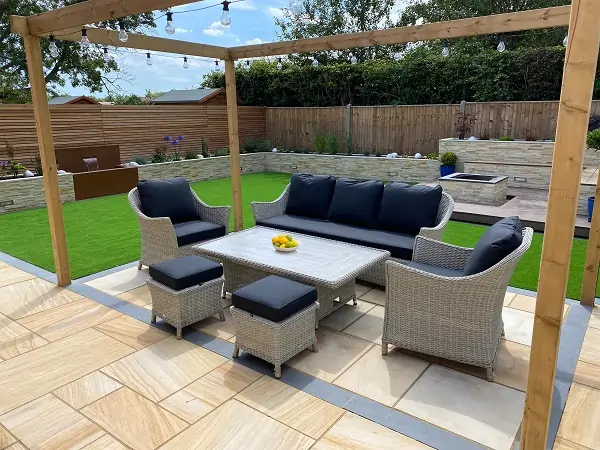
Brown/buff
Browns and buffs add a warmth with colours that can darken dramatically when wet. These tones are often chosen for rustic designs and older properties. Autumn Brown sandstone is a favourite, with Camel Dust as another riven option. Check out Buff as a sawn alternative.
Dune is a great choice when you’d like a sawn stone at a budget price. Chosen for its density and hard-wearing nature, it’s a warm buff with a particularly lovely character, it has mid-brown and darker-brown markings formed by rust and iron deposits. These ripple across the surface in a way that reminds you of desert sand or those fascinating lines on a sandy beach when the tide’s gone out. Sawn six sides, its fine grain has a luxurious feel underfoot.
Click through to our sandstone paving to find helpful information on colour variations within each product.
Or why not visit one of our showrooms around the country? You'll find our full paving range, free refreshments, and experienced, knowledgeable staff to help with your selection.



